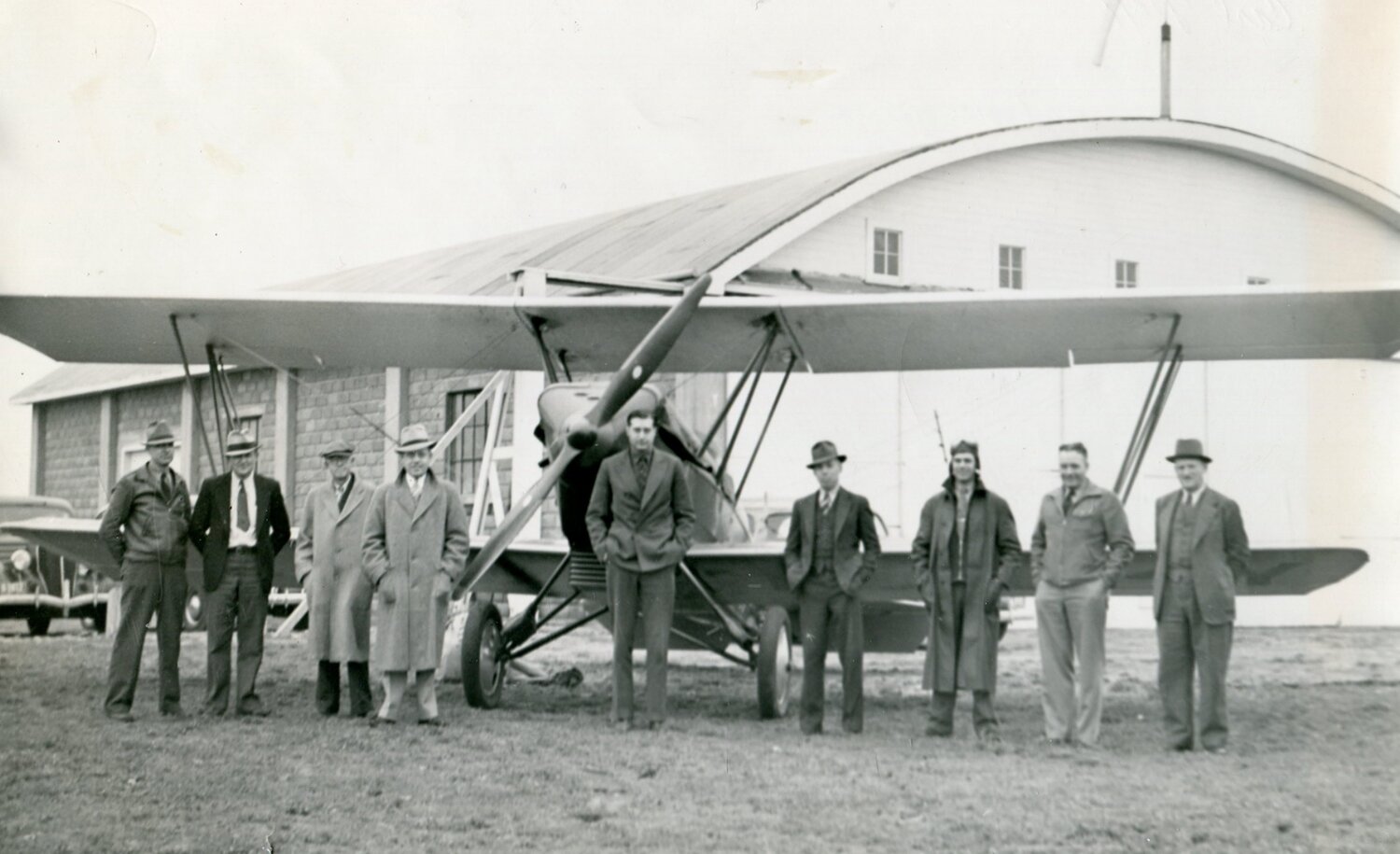For The Brookings Register
I n 1929, Brookings Commercial Club members recognized the potential for commercial aviation and sought city commission support for a city airport.
Commissioners liked the idea and gave the …
This item is available in full to subscribers.
To continue reading, you will need to either log in to your subscriber account, below, or purchase a new subscription.
Please log in to continue |

In 1929, Brookings Commercial Club members recognized the potential for commercial aviation and sought city commission support for a city airport.
Commissioners liked the idea and gave the Commercial Club (the future Brookings Chamber of Commerce) an approving nod to bring them a proposal.
Land negotiations for a suitable site near Brookings stalled, and nothing happened until the spring of 1934 when land was finally acquired south of Brookings. For that initial expense, and for other airstrip preparation, the federal Civil Works Administration granted the city $7,820 and the city kicked in $4,942.
The grant paid Mary Chatford for 160 acres of her land at $25 an acre. It also funded airstrip preparation. Soon the new city airport had a grass runway on the east side of Medary Avenue just south of today’s soccer field. The runway extended from the land’s northwest corner to its southeast corner. The “site” is still there at the northeast quadrant of Medary and 32nd Ave., although now under private ownership.
It will probably be a nice residential neighborhood one day.
The first airplane to land at the airport was piloted by Clarence Albem of Groton, who flew down to attend the Oct. 28, 1934, Hobo Day game. Albem apparently wasn’t aware of the new airport and had landed the day before on what was a nine-hole golf course at today’s Chittick Gardens along the Highway 14 Bypass. After someone told him about the new airport, he took off the next morning and headed for the new Brookings Airport.
The airport site he landed upon was what city officials and Commercial Club members of that day described as “one of the best sites in the state.” Later, the Public Works Administration provided Brookings with $9,000 to build the airport hangar at the southwest corner of the field.
It was a well-built, handsome hangar of 62 feet by 83 feet. Its big door was 14 feet high and 60 feet long. It had a domed wooden roof over a floor of concrete about 5 inches thick.
Brookings held a grand opening air show at the site on Oct. 4, 1936. Aircraft on display and for brief rides included a six passenger Travelir, a new 1936 Aeronca, a 220 horsepowered Wago and a four-seat Stinson owned by well-known aviator Cecil O. Shupe, who taught aviation mechanics at State College for several years.
The new airport had good use, but it turned out not to be “one of the best sites in the state,” as city officials had first described it. It had a tendency to flood. One pilot said flood water on the field was too shallow to land on with pontoons and too deep to land on with a wheeled airplane.
Yet on a dry May 19 in 1938, the first sack of airmail to have a Brookings return address left the field with pilot John Henry at the controls. On another dry day in 1941, two twin-engine Cessna aircraft that had been purchased by Canada for war use were forced by weather to land on the field.
By 1943 during WWII, Brookings Mayor Homer Dwiggins spoke before the Kiwanis Club and said the city’s No. 1 post-war planning project had to be “what to do about the airport.” He said city leaders had discussed spending as much as $350,000 to develop a new airport.
In 1948, two years after the end of WWII, the city auctioned off the old airport’s domed hangar. It sold for $15,000, but only the wooden dome was salvaged. The concrete block walls remained and were still standing until a few years ago.
And by the way, the day of the first use of the old airport on Hobo Day Oct. 28, 1934, Groton pilot Albem had an enjoyable flight home after the game. The Jacks beat USD 19-zip.